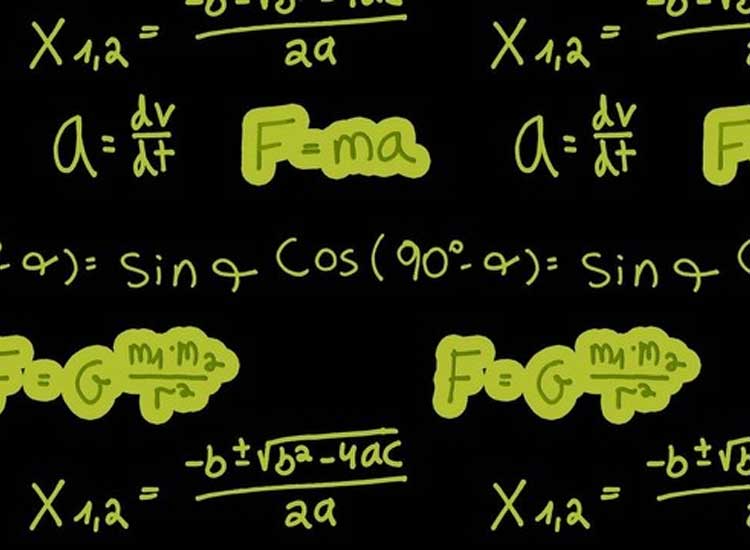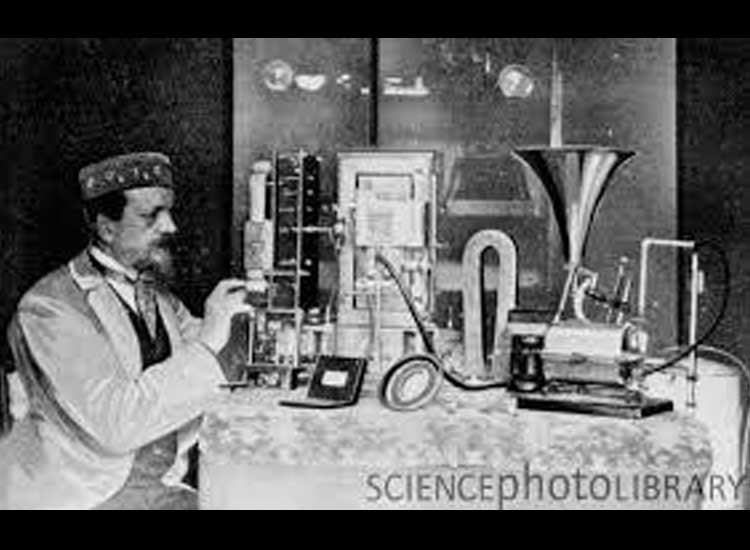The Discoverer of Gravity, Who He Is – Discoverer of gravity – Everyone can feel that they can stand up straight without any interference. In fact, other objects on earth, including natural objects such as land and water, will not fall anywhere other than down or onto the earth’s crust, where we can set foot.
The thing that can make all objects stay still and not fly everywhere like in outer space is gravity. The gravitational force is a force that can attract other objects towards the center of the earth, such as humans, animals, plants and all the contents of the earth.
In fact, gravity doesn’t only occur on earth. The entire universe has a gravitational force. Every planet in the universe also has a gravitational force, but of course the gravitational pull on one planet and another planet is certainly different.
The 2nd Edition of the Astronomy Olympiad Magic Book is the locomotive that started a series of books to support students’ preparation for taking part in astronomy Olympiads from the lowest level to the international level. This book contains material presented comprehensively, accompanied by adequate illustrations, and is equipped with several practice questions that can test understanding and stimulate students’ analytical thinking.
So, do you know who discovered gravity? For this reason, Gramedia this time will discuss the discoverer of gravity. To find out more about the explanation, let’s look at the following review.
Understanding Gravity
Gravity comes from the Latin gravitas which means “weight” and is a natural phenomenon that attracts every object in the universe that has mass or energy, including planets, stars, galaxies and even light. One another. On Earth, gravity causes physical objects to be heavy, the Moon’s gravity causes the tides, and the Sun’s gravity causes the planets and various other objects to orbit each other in the solar system.
The gravitational force of cosmic matter in the universe gathers matter to form stars, and these stars gather to form galaxies, so the large-scale structures in the universe can be said to be created by gravity. Gravity has an infinite range of values, but its effect weakens as the object moves away.
Modern physics uses the general theory of relativity proposed by Albert Einstein in 1915 to most accurately describe gravity. This theory does not explain gravity as a force, but as a result of “straight” mass motion in the curvature of space-time due to non-uniform mass distribution. The most extreme example of space-time curvature is a black hole, where not even light can escape through the black hole’s event horizon.
However, in most cases, gravity can be explained by Newton’s simple law of universal gravitation. Newton described gravity as a force that attracts two physical objects to each other as a force proportional to the resulting mass and inversely proportional to the square of the distance between them. Some unproven theories claim that gravity arises from the presence of graviton particles in each atom.
Gravity Function
According to Newton, there are 3 functions of gravity which have a relationship that will occur on earth when gravity acts on other celestial bodies. Here are the functions.
1. Sun Gravity
The sun’s gravitational force is 274 m/s². This quantity allows the Earth and other celestial bodies to rotate or rotate around an axis due to the sun’s gravity. This situation causes the change of day and night.
The earth and other celestial bodies also revolve around the sun in fixed orbits called revolutions. This situation causes seasonal changes in areas on the earth’s surface.
2. Moon Gravity
The moon’s gravitational force is 1.62 m/s². The function of the moon’s gravity is that when the moon moves around the earth and is closest to the earth, sea water experiences ebb and flow. High tides are caused by the moon’s gravity and cause sea water to be attracted to the moon. Therefore, this affects the wave height and sea level at that time.
3. Earth’s Gravity
Earth’s gravity is 9,807 m/s². The function of the earth’s gravity is to carry out the rotation and revolution of the earth, which is influenced by the gravity of the sun and the earth. The earth’s gravitational force is intended to keep the earth rotating on its axis. Humans can walk well thanks to gravity. The entire contents of the earth can also be maintained in balance because of the earth’s gravity.
Isaac Newton was born in the village of Woolsthorpe, East England. Since childhood, his intelligence has managed to surprise other people. He studied natural philosophy. After that, he left behind several historical scientific discoveries such as calculus, the law of universal gravitation, mechanical systems, and others. In this book you can get to know Isaac Newton more deeply.
Sir Isaac Newton FRS PRS was born on 25 December 1642 and died on 20 March 1726 was an English physicist, mathematician, astronomer, naturalist, alchemist, theologian, and most of all he is widely known as a mathematician, physicist and writer.
He is the most influential scientist of all time. He was a follower of the heliocentric school, a scientist who had a great influence throughout history, and is even considered the father of classical physics.
He wrote a book entitled Philosophiæ Naturalis Principia Mathematica, published in 1687, considered the most influential book in the history of science. This book discusses the basics of classical mechanics. In this work, Newton explained the law of gravity and the three laws of motion that had dominated the scientific view of the universe for three centuries.
Newton was able to show that the motion of objects on Earth and other objects in space are governed by the same natural laws. He proved this by showing a correspondence between Kepler’s laws of motion and his theory of gravity. His work ultimately dispelled scientists’ doubts about the heliocentric theory and prompted a scientific revolution.
In the field of mechanics, Newton discovered the principles of conservation of momentum and angular momentum. In optics, he built the first reflecting telescope and was able to develop color theory based on the observation that glass prisms separate white light into different colors. He also formulated the law of cooling and studied the speed of sound.
With the work of Gottfried Leibniz, also carried out separately in mathematics, Newton developed calculus and integrals. He also succeeded in developing binomial theory, developed the “Newtonian method” for approximating the zero value of a function, and contributed to the study of power series.
Even today, Newton still has a huge influence among scientists. In a 2005 survey of scientists and the general public at the Royal Society of England, a survey of who contributed more to science, whether Newton or Albert Einstein, found that Newton was believed to have contributed more.
Newtonian Gravity
Newton explained the law of gravity between stars in the universe and proved that the refraction of light cannot be detected and touched. Isaac observes, studies, observes and enthusiastically thinks about natural phenomena that most people do not take seriously, so they simply pass by.
He pondered the law of gravity while resting under an apple tree. Then, the tree dropped an apple nearby. Isaac wondered why the apple was falling downwards instead of up. Then, in 1665 he discovered the law of gravity and succeeded in studying light and telescopes.
Then, in 1679, Newton refocused on celestial mechanics, gravity and its influence on planetary orbits, referring to Kepler’s laws of planetary motion. It was inspired by a short exchange of letters with Hooke, who was appointed to manage the Royal Society’s communications in 1679–1680, and early communications asking Newton to contribute to the Royal Society’s scientific journals.
The revival of Newton’s interest in astronomy was further stimulated by the appearance of a comet in the winter of 1680-1681, which he discussed in communications with John Flamsteed. After speaking with Hooke, Newton provided proof that the elliptical orbits of planets result from centripetal forces that are inversely proportional to the square of the radius vector.
Newton sent this work to the Royal Society in Edmond Halley and Demotu Corporum in Gyrum. This is a 9-page dissertation copied into the register of the Royal Society in December 1684. It constitutes a central form of the argument that was developed into the Principia.
The Principia was published on July 5, 1687, with the support and financial backing of Edmond Halley. In this work, Newton established Newton’s laws of motion, which constituted much of the progress of the subsequent Industrial Revolution.
This law has not been changed after more than 200 years and is the basis of non-relativistic technology in the modern world. It is known as gravity and uses the Latin word gravitas meaning (weight) to define the law of universal gravitation.
In the same study, Newton used a method of geometric analysis similar to a small calculus with “initial to final ratios” and a special method to determine the speed of sound in air (according to Boyle’s law) as well as determine the speed of the shape of the Earth’s spheroid, taking into account the precession of the equinoxes due to the gravitational pull of the moon on the speed of the Earth, began gravitational studies of irregularities in the motion of the Moon, provided a theory for determining the orbits of comets, and much more.
Newton realized in the mid-1680s that the Sun was not exactly at the center of gravity of the solar system, expressing a heliocentric view of the solar system that developed in a more modern way.
For Newton, the center of gravity of the Sun or any other celestial body should not be considered stationary, but it was “the common center of gravity of the Earth, the Sun, and the planets” and that center of gravity should be “stationary” or “moving uniformly in a line”. Newton adopted an alternative “immovable” view, taking into account the common view that the center does not move wherever it is.
Grameds, that’s the article about the discoverer of earth’s gravity, namely Sir Isaac Newton, who is known as a scientist who had a big influence on other scientists. It is hoped that from this article you can also learn something that you may not have known at first.
If you want to learn about Sir Isaac Newton, the science of gravity, or other astronomical sciences, you can buy books at Gramedia. Gramedia as #FriendsWithoutLimits has provided various books that may be useful for you. Come on Grameds, buy the book now!
Link Terkait :





